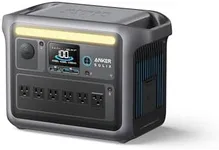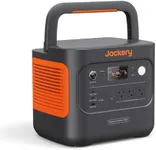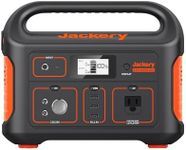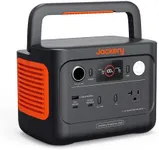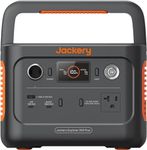Buying Guide for the Best Portable Power Supply For Cpap Machine
Choosing a portable power supply for your CPAP machine is all about ensuring you have reliable, safe, and convenient power when you're away from a regular outlet. Whether you're camping, traveling, or dealing with power outages, the right power supply can make a big difference in your comfort and health. It's important to match the power supply to your CPAP's requirements and your own usage habits, so you can sleep soundly wherever you are.Battery Capacity (mAh or Wh)Battery capacity tells you how much energy the power supply can store, usually measured in milliamp-hours (mAh) or watt-hours (Wh). This is important because it determines how long your CPAP machine can run before the power supply needs recharging. Lower capacity batteries might only last a few hours, which could be enough for a nap or short use, while higher capacity batteries can power your CPAP for a full night or even multiple nights. To pick the right one, consider how long you need your CPAP to run without access to charging—if you only need it for a night or two, a mid-range capacity may be enough, but for longer trips or frequent use, go for a higher capacity.
Output Voltage and CompatibilityThe output voltage is the amount of electrical power the battery provides, and it needs to match your CPAP machine's requirements. Some CPAPs run on 12V, others on 24V, and some need a specific adapter. This is crucial because using the wrong voltage can damage your machine or simply not work. When choosing, check your CPAP's manual or label for its voltage needs, and make sure the power supply can deliver that exact voltage. Some power supplies offer adjustable outputs or come with multiple adapters, which can be helpful if you have more than one device.
Portability (Size and Weight)Portability refers to how easy it is to carry the power supply with you. Smaller, lighter units are easier to pack and carry, making them ideal for travel or backpacking, but they may have less battery capacity. Larger units might last longer but can be bulky and heavy. Think about how you'll use it—if you need to carry it in a backpack or suitcase, prioritize compact and lightweight models. If you'll mostly use it in a car or at a campsite, a bigger unit might be fine.
Recharge OptionsRecharge options describe how you can refill the battery's power. Some power supplies can be recharged from a wall outlet, car charger, or even solar panels. This is important if you'll be away from traditional power sources for a while. If you plan to camp or travel off-grid, look for a power supply that supports solar charging or car charging. If you'll mostly recharge at home, a simple wall charger may be enough.
Run Time with CPAP SettingsRun time is how long the power supply can keep your CPAP running, and it can vary depending on your CPAP's pressure settings, whether you use a humidifier, and the battery's capacity. Higher pressure or using a heated humidifier will drain the battery faster. To choose the right one, think about your typical CPAP settings and whether you can turn off features like the humidifier to extend battery life. Some power supplies provide estimated run times for different machines and settings, which can help you decide.
Safety FeaturesSafety features protect both you and your devices from problems like overcharging, overheating, or short circuits. These are important because they prevent damage to your CPAP and reduce the risk of accidents. Look for power supplies with built-in protections such as automatic shutoff, temperature control, and certifications for safety standards. If you have medical needs, these features are especially important for peace of mind.
Airline ApprovalIf you plan to fly with your portable power supply, airline approval is a key factor. Airlines have rules about the size and type of batteries you can bring on board, usually limiting the watt-hour rating. This is important to avoid problems at the airport. Check the airline's guidelines and make sure the power supply is within the allowed limits and labeled accordingly. If you travel by air often, choose a model that is specifically marked as airline-approved.
